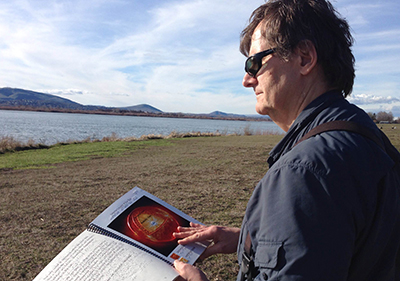Frank

Engineering
My journey in STEM began in grade school in the form of a gift. My grandfather gave me an old book on radio theory. I loved it. Even though I was blinded a few years later, it never occurred to me to try a different path than electronics! After high school, I attended Montana State University, where I majored in electrical engineering and was awarded the nation’s largest scholarship for students seeking degrees in STEM fields.
I pretended that I could still see in those days. I never stopped being proud, but eventually I did start using a long white mobility cane. My mentor Fred, who hired me as an electronics technician in the Physics Department, taught me how to solder and debug circuits. Together we designed and built all kinds of great tortures for the instructors to inflict on their students in the physics labs. I still had a small amount of vision in those days, and I used an old blackboard, white chalk, and a magnifying glass to solve many of my math problems.
I worked for Battelle Pacific Northwest Laboratory for many years as an electronics technician, a senior computer consultant, and an electrical engineer. During these years I also earned my masters degree in electrical engineering from Washington State and became a registered professional engineer.
One of the fun things we did in our spare time at Battelle was to build a robot called the Cubot that could not only solve the Rubik’s cube puzzle mathematically, but could also physically solve the puzzle, turning the faces of the cube with its manipulators. I programmed the robot’s speech using 80186 assembly language.
In the late eighties I decided I wanted to attend Space Camp—the ultimate playground for lovers of the space program. Today, the camp has a great program for students who are blind, but, when I applied, they would not even consider such an incursion. It took the support of two senators and the assistance of the white cane law for me to finally become the first blind person to attend Space Camp.
When Galileo studied gravity, he didn’t just drop two balls of different weights from the Leaning Tower of Pisa; he rolled them down an inclined plane, which allowed for easier examination. It amazes me how unique approaches from intelligent people can solve life’s mysteries. This is why I have devoted my life to the field of science and engineering. It’s been a great journey so far!